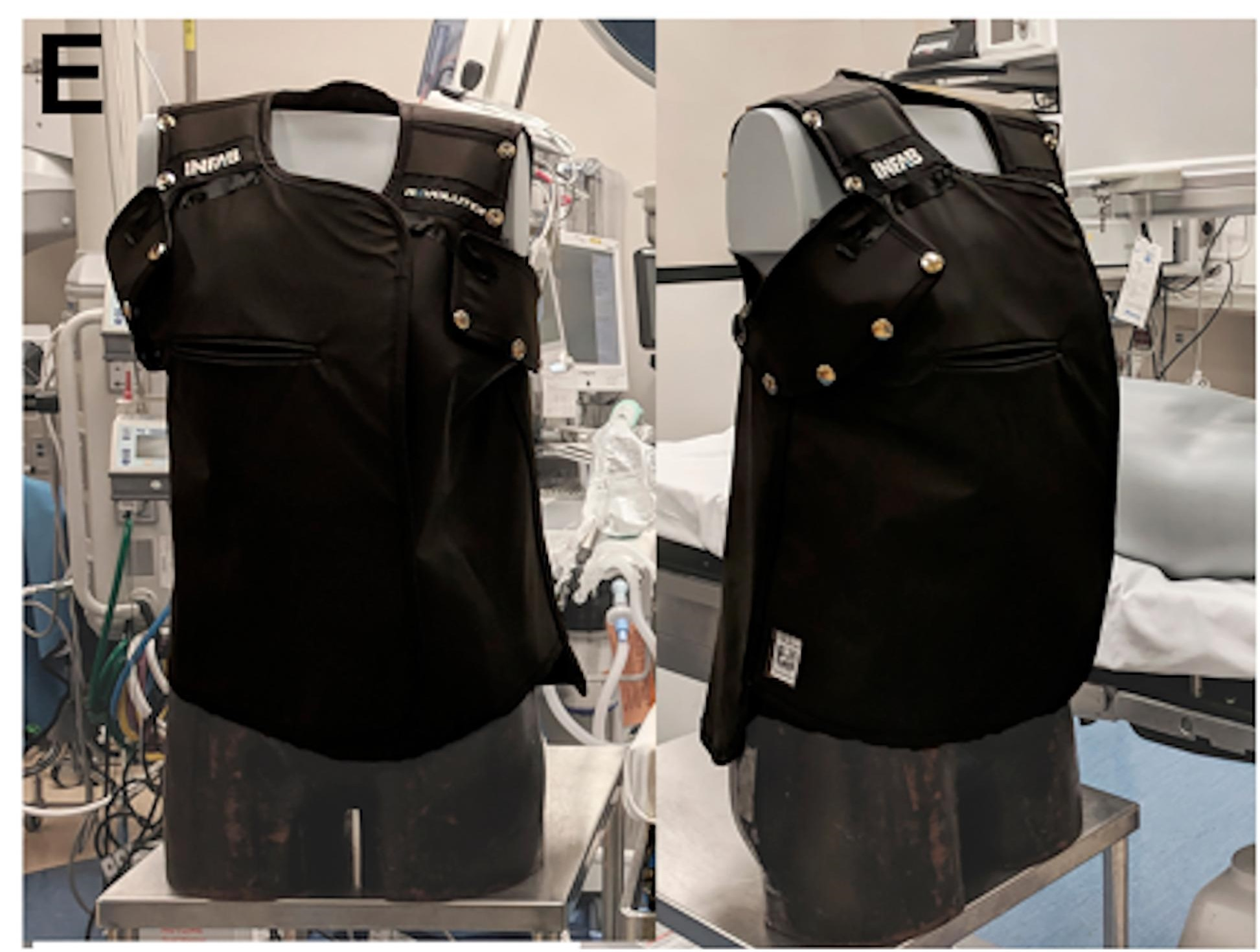The risk of radiation exposure in the operating room (OR) is of increasing interest to orthopaedic surgeons, and the advent of lead vests and aprons, thyroid shields, and lead glasses have given surgeons wearable protection in the OR. However, recent research has demonstrated that lead vests and aprons do not adequately shield the most frequent site of breast cancer, the upper outer quadrant (UOQ) of the breast, which commonly extends into the axilla.
In the September 1, 2021 issue of JBJS, Van Nortwick et al. report on the efficacy of lead vest supplements in reducing breast radiation exposure. The researchers simulated a standard OR setting, placing an anthropomorphic torso phantom, representing a female surgeon, adjacent to an OR table. Dosimeters were employed, and scatter radiation dose equivalents were measured during continuous fluoroscopy of a pelvic phantom, representing the patient. Using 2 C-arm positions (anteroposterior and cross-table lateral projections), and with the surgeon in 2 different positions (facing the table and perpendicular to it), 5 different configurations were tested:
- No lead
- Lead vest
- Lead vest with wings
- Lead vest with sleeves
- Lead vest with axillary supplements (the wing placed on the inferior aspect of the axillary opening)
Across scenarios, the average breast UOQ radiation exposure with the use of a lead vest alone (97.4 mrem/hr) did not differ significantly from that with no lead protection (124.1 mrem/hr). However, compared with lead vest alone, significantly less exposure was seen with the use of sleeves (0.8 mrem/hr) and axillary supplements (1.3 mrem/hr). Wings (59.4 mrem/hr) decreased exposure to a lesser extent than sleeves or axillary supplements (and the difference when compared with lead vest alone was not significant). Also noted, C-arm cross-table lateral projection had higher scatter radiation than the anteroposterior projection, as has been demonstrated in previous studies.
The authors point out that, in creating the axillary supplement, a standard wing was simply attached below the axilla rather than above the shoulder, a novel approach to increasing vest protection. While comfort in using lead sleeves or axillary supplements is important to investigate further, data from this study could help inform vendor design modifications resulting in greater protection from breast radiation exposure, and ideally eliminate the need for surgeons to have to “MacGyver” a solution from existing parts.
Matthew R. Schmitz, MD
JBJS Deputy Editor for Social Media
A downloadable JBJS infographic summarizing this study can be found here.



